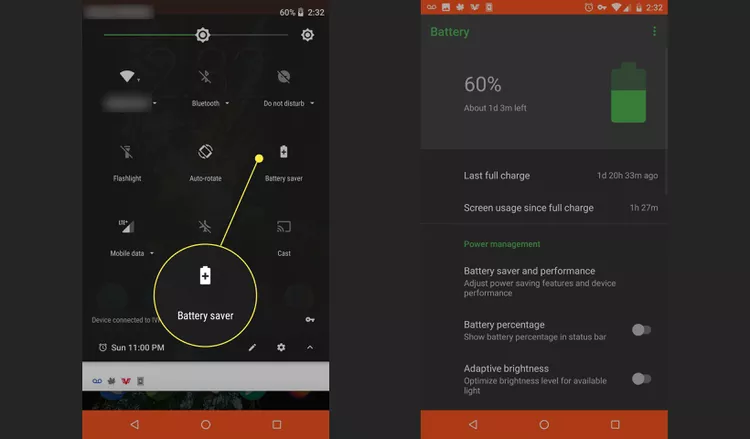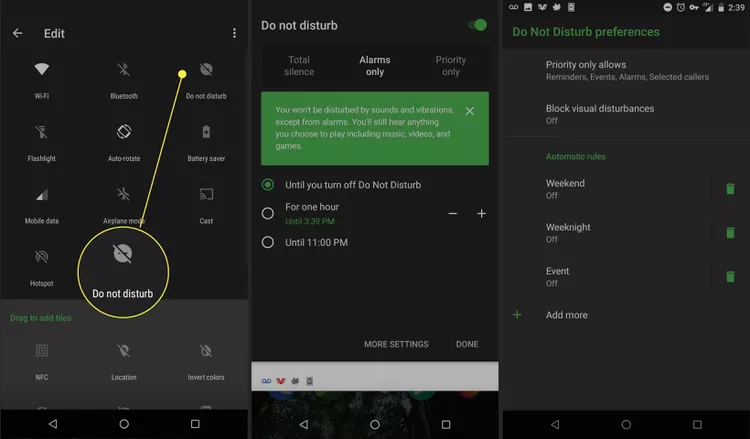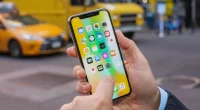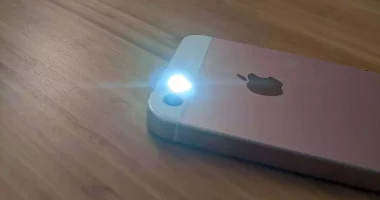The Quick Settings menu provides you with instant access to several crucial system features, as its name implies. By doing this, you may avoid wasting time going into settings each time you want to do something simple, like turning on Wi-Fi. Let us now examine in detail how to use and personalize the Android Quick Settings panel.
The Quick Settings menu on Android offers more options than just turning on and off services. You may easily perform things like changing the Wi-Fi network or connecting to a nearby Bluetooth device by long tapping on some tiles, which will take you to their settings page. Continue reading if you’re interested in learning more about customizing the Android Quick Settings menu
Get a Full or Abbreviated Quick Settings Tray
Finding the menu is the first thing to do. To access the Android Quick Settings menu, simply drag your finger down from the top of the screen. Once your phone is unlocked, you can utilize the screen on the left, which is an abridged menu, or you can drag down to access an enlarged fast settings tray (the screen on the right), which offers additional options.
Different phones may have slightly different settings available. Moreover, Quick Settings tiles from the apps you install on your phone can also show up here. You have the ability to modify the options and the order if you’d like. Soon, we’ll address it.
Use Quick Settings When Your Phone is Locked
It is not necessary to use your fingerprint, pattern, password, or pin number to unlock your phone. The Quick Settings menu is accessible if your Android device is turned on. Before you unlock it, not all of the Quick Settings are accessible. You can activate the flashlight or put your phone in airplane mode, but you’ll be required to unlock your phone in order to utilize any Quick Settings that could potentially expose your data to other parties.
Quick settings locked on Android
- Customize Your Fast Settings Menu
- Not pleased with your choices? Modify them.
- Your phone must be unlocked in order to modify the Quick Settings Menu.
- To get the fully expanded tray, drag down from the shortened menu.
- Give the pencil icon a tap.
- Next, the Edit menu will appear.
- Android configuration.
- To make modifications, long-press (contact the object until you get a feedback vibration) and then drag.
- To view the tiles, drag them into the tray; to hide them, drag them out.
- It is also possible to rearrange the Quick Settings tile order. The shortened Quick Settings menu will display the top six options.
- There might be more options for you than you realize. If you scroll down (move your finger from the bottom of the screen upward), you can occasionally see more tiles.
- Time to take a closer look at some of the Quick Settings tiles and their functions.
Wi-Fi
The network you are currently using (if any) is displayed in the Wi-Fi setting, and selecting the settings icon displays the networks that are available in your vicinity. In order to add more networks and manage more sophisticated settings, like having your phone connect to open Wi-Fi networks automatically or remain connected even when in sleep mode, you can also access the entire Wi-Fi settings menu.
Battery

I think most people who use phones are already familiar with the Battery tile. It displays both the battery’s current charging status and its current level of charge. You may get a graph of your recent battery usage by tapping on it while it’s charging.
While your phone is not charging, tapping it will reveal an estimated battery life and give you the choice to switch to Battery Saver mode, which gently dims the screen in an effort to save battery life.
Flashlight
In order to utilize your phone as a flashlight, the flashlight activates the flash on the back of the device. Here, a deeper choice is absent. To navigate in the dark, simply turn it on or off. This can be used without unlocking your phone.
Cast
You may instantly connect to a Chromecast device by using the Cast tile if you have both Google Home and Chromecast installed. Casting first and then connecting saves time and facilitates navigation, even though you could connect directly from the app (Google Play, Netflix, or Pandora, for instance).
Auto-rotate

You can choose whether or not your phone rotates horizontally to show horizontally. For example, you can use this as a quick toggle to stop the phone from automatically spinning while you’re reading in bed. Remember that this tile can be in any state, whereas the Android Home menu is always locked in horizontal mode.
The display settings menu for advanced options can be accessed by long-pressing on the Auto-rotate tile.
Bluetooth
Tap this tile to turn on or off the Bluetooth antenna on your phone. To pair more Bluetooth devices, you can long-press.
Airplane Mode
Airplane mode disables cellular data and Wi-Fi on your phone. To rapidly switch between Airplane mode and off, tap this tile; to view the Wireless and Networks settings menu, long-press on the tile.
Not just airplanes can use airplane mode. Turn this on for the best possible do-not-disturb experience while conserving battery life.
Do Not Disturb

You can manage your phone’s notifications with the Do Not Disturb function. Selecting this tab will enable you to adjust the level of undisturbedness and turn on the “Do not disturb” feature. If this was an error, toggle it off.
Nothing can pass through complete stillness, and prioritization merely muffles the majority of annoying distractions, such as alerts about new book sales.
Additionally, you can indicate how long you would like to be alone. Schedule a time or leave it in “Do not disturb” mode until you want to use it once more.
Hotspot
Using a hotspot, you may share your data service with other devices, such as your laptop, by using your phone as a mobile hotspot. We also call this tethering. Use this feature carefully because some carriers charge for it.
Invert the colors
The colors in every app and on your screen are reversed by this tile. If you can view the screen more easily with the colors reversed, you can use this.
Data Saver
Data Saver turns off several apps that use background data connections in an effort to reduce your data usage. Use this if your cellular data plan has a limited bandwidth. Press to turn it on or off.
The NFC

While it wasn’t included in the Quick Settings tray by default, Android 7.1.1 (Nougat) introduced the NFC tile. It functions much like a social sharing feature, allowing you to communicate information between two phones that are close to each other through an app. For this tile to function, you must have an app that utilizes the Nearby feature. Examples of apps are Pocket Casts and Trello.
Related Articles:
https://landscapeinsight.com/technology/phone-not-registered-on-network/72228/
https://landscapeinsight.com/technology/why-is-my-phone-black-and-white/72048/
Jessica is engaged in brand exposure at LandscapeInsight. She brings forth content that helps both the reader and brands based on research and trends. You can reach Jessica at –[email protected] or on Our website Contact Us Page.








